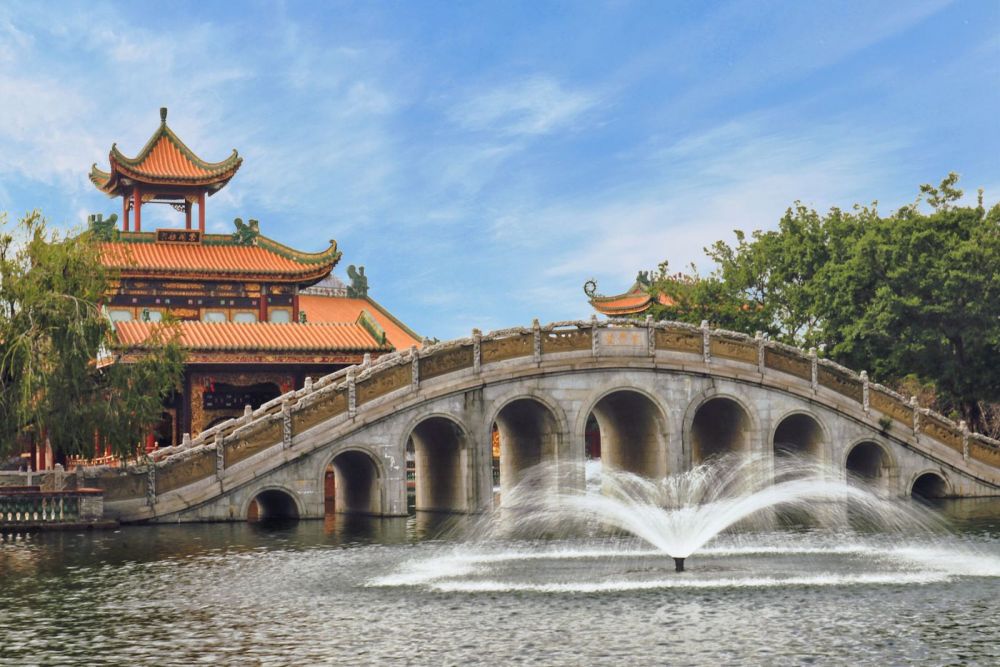Chinese Name: 宝墨园 Pronunciation: bǎo mò yuán
Best Visiting Season: All seasons
Recommended Time for Visit: 3-4 Hours
Occupied Area: About 100, 000 square meters
Address: Zini Village, Shawan Town, Panyu District, Guangzhou City, Guangdong Province
Building Time: The Late Qing Dynasty(1636-1912)and the early Republic of China (1995-2002)
Popular Activities: Folk culture festival and lion dance show during the Spring Festival, sakura festival, and water view tourism culture festival
Building Function: In memory of Bao Zheng (999-1062), a famous official in the Northern Song Dynasty (960-1127)
| Contents | Adults |
Children of 1.2-1.5 meters and
senior citizen with age between 60-64
|
| Baomo Garden Gate | CNY 54 | CNY 27 |
| Joint Ticket (including Nanyue Garden) | CNY 104 | None |
1. Free for children under 1.2 meters (1.2 meter is not included) ;
2. Free for the aged 65 or above with ID card or senior citizen card;
| Baomo Garden | All seasons |
| Gate Opening Hours | 8:30-17:30 |
| Ticket Office Opening Hours | 8:30-17:00 |
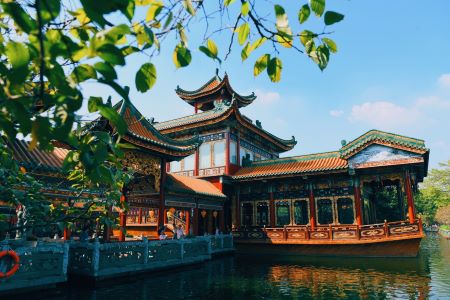
The Baomo Garden is nationally known as an imitated ancient garden, a place to reminisce Bao Zheng, an official of the Northern Song Dynasty. It is also a tourist resort for recreation and sightseeing that integrates Lingnan building art (Lingnan refers to the region including Guangdong, Guangxi, Hainan, Hong Kong and Macau), garden landscape, and unique art treasures. Dotted with lakes, flowers, classic buildings, and museums, the Baomo Garden is comparable with the imperial palace.
Noted for its beautiful scenery, high-grade natural resources, and historical flavor, the Baomo Garden has been rated as a national AAAA-level tourist attraction, the first batch of integrated tourism demonstration zone, and one of the national top 100 self-driving scenic areas. In 2008, it was one of the eight outstanding views in Panyu District.
Established in the Late Qing and early the Republic of China, the Baomo Garden was once the former residence of Bao Zheng (999-1062) in the Northern Song Dynasty.
During the Jiaqing period of the Qing Dynasty (1636-1912), an anti-corruption action prevailed. People hoped for a clean government where officials were honest and political affairs were handled with integrity, so they put up a residence in memory of Bao Zheng, a reminder to their descendent of being honesty.
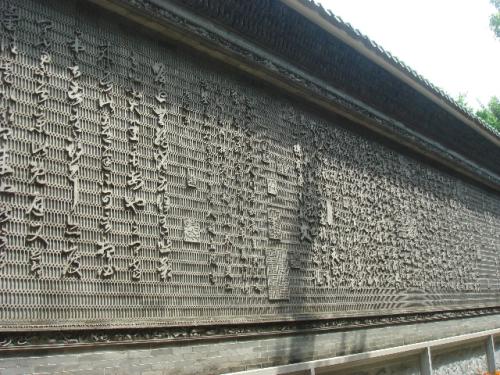
The porcelain relief mural ‘Riverside Scene at Qingming Festival’ is the representative artwork in the Baomo Garden. It vividly depicts the original work with relief skills. Designed by 1,352 colored carving tiles, it is 62 meters long and 2.9 meters high, demonstrating a sense of magnificence. It has been listed in the Guinness World Records for its unique design and exquisite craftsmanship.
Flower-and-Bird Brick Carving Screen, constructed with more than 30,000 granite tiles, is 5.83 meters high and 22.38 meters long. The whole construction took as long as three years and six months to finish.
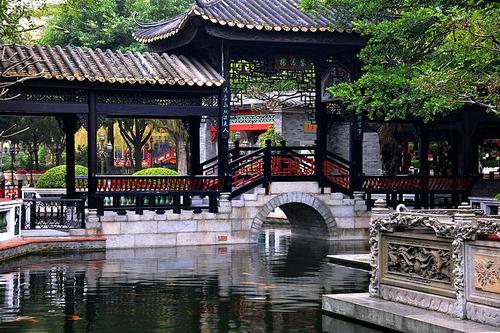
Situated at the bank of the Baomo Lake, the Baomo Hall is an imitated ancient building in memory of Bao Zheng. The hall exhibits many porcelain statues, telling the stories about Bao Zheng and the local people. In the center of the hall stands a statue of Bao Zheng, with one couplet on the two sides that eulogizes Bao’s significant contributions to the Northern Song Dynasty. When you enter the Baomo Hall, you will feel a sense of respect for this outstanding official.
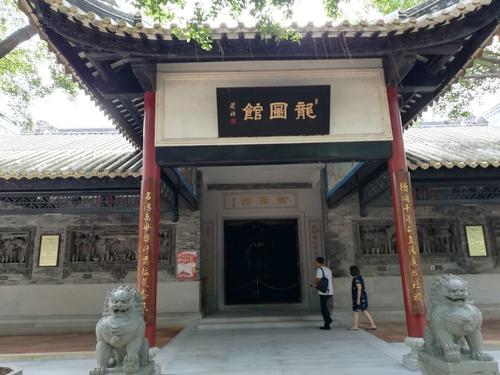
The Longtu Hall shapes distinctive Lingnan culture. Inside the hall, brick sculptures, stone carvings, and wood carvings can be seen everywhere. Crossing the promenade, and listening to the stories about Bao Zheng, visitors surely will respect him. In the Longtu Hall, people will appreciate the view of blooming flowers and enjoy the unique architectural styles.
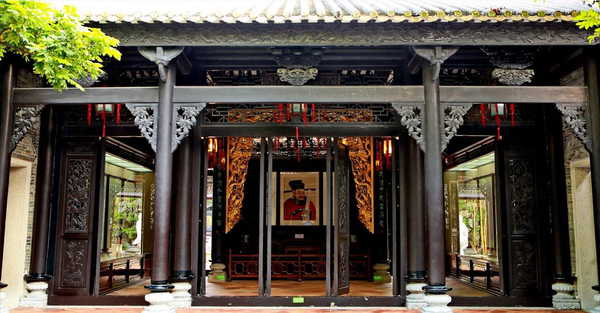
If you want to know more information about Bao Zheng, the Zhiben Hall is another place to get close to this famous figure. The hall displays the introduction of Bao Zheng, including his life, poems, and political contributions. It is said that Bao Zheng wrote in his poem that being a clean and upright person is the root of governing political affairs, and anti-corruption is the premise of ensuring a clean government (清心为治本, 直道是身谋), hence the hall is named Zhiben Hall. In the center of the hall stands the statue of Bao, with one couplet on its two sides meaning “a loyal official, prime minister and respectful literati advocating virtue” (忠贤将相,道德名家).
Bao Zheng was a famous official in the Northern Song Dynasty. People counted him as “Bao Qingtian” (an honorific title of Bao Zheng), eulogizing his virtue of fairness and integrity. Today, there are still many people who are spreading Bao’s virtue. People adapt his stories for TV series that become popular among the Chinese people. Here is one of the stories:

In the first year (1041) of the Kangding period during the reign of Emperor Renzong of the Northern Song Dynasty, Bao Zheng was the governor of Duanzhou (in today’s Zhaoqing City, Guangdong province) where abounded in precious inkstones. During his tenure, Bao Zheng made great contributions to the people without any payback. To express their appreciation, the local people gave secretly a square inkstone to one of his officials. However, it was found by Bao Zheng, who ordered the official to throw the gift into the river, which is the origin of the story “throwing the inkstone into the river” (宝砚投江).
Garden Gate→ Nine-Dragon Bridge→ Flower-and-Bird Brick Carving Screen→ Qingxin Pavilion→ the Longtu Hall→ Zhao Tailai Collection Hall→ Spring for fishing→ Millenary Podocarpus→ the Baomo Hall→ the Zhiben Hall→ Huo Zongjie Collection Hall→ Zhao Shaoang Art Museum→ Yang Shanshen Art Museum→ Ricepaperplant Pith Painting Collection Hall→ Yilinyuan Archway→ Gusexinxiang Archway→ Zhao Tailai Art Museum→ the Porcelain Inverse Relief ‘Riverside Scene at Qingming Festival’→ Rose Garden→ Lotus Pond→ Jade Ware Hall→ Litchi Bridge→ Treasure Collection Hall→ Yile Pavilion→Garden Gate
Take bus Pan 67, Pan 12 and get off at the Baomo Garden Station.
There is no direct subway to the Baomo Garden.
Chinese: 请带我去宝墨园。English: Please take me to the Baomo Garden.
Chinese: 请带我去宝墨园的西北门。English: Please take me to the Northwest Gate of the Baomo Garden.
If you go to the Baomo Garden from the center of Guangzhou (Hilton Guangzhou Tianhe Hotel), it takes about 50 minutes (about 110 yuan).
If you go to the Baomo Garden from Guangzhou Baiyun International Airport, it takes about 1 hours (about 260 yuan).
If you go to the Baomo Garden from Guangzhou South Railway Station, it takes about 30 minutes (about 80 yuan).
If you go to the Baomo Garden from Guangzhou North Railway Station, it takes about 80 minutes (about 200 yuan).
